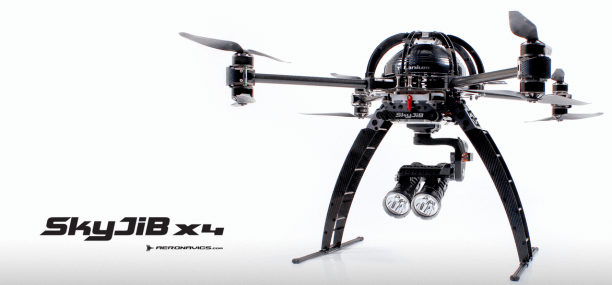
“Potential uses for this technology include search and rescue missions or remote surveillance and assessment of conditions too hazardous for humans,” said Dr. Richard Prazenica, Assistant Professor of Aerospace Engineering and Principal Investigator at Embry-Riddle’s Daytona Beach Campus. “This intelligent, autonomous UAV could explore unmapped or unsafe environments to locate someone injured in an earthquake, or assist and communicate with firefighters while gathering information as it moves through a smoke-filled building.”
The enhanced navigational system would incorporate recent developments in small, low-power and low-cost sensor technology and improved computer hardware without GPS, supported by a high-performance guidance, navigation and control (GNC) system.
The Embry-Riddle team includes graduate students in the Aerospace Engineering Department led by Prazenica and Co-Principal Investigators Dr. Troy Henderson and Dr. Hever Moncayo.
The autonomous GNC system would include 3-D terrain sensing capabilities using vision sensors and laser-based LiDAR (light detection and ranging) sensors. Cutting-edge technology including artificial intelligence-based flight control systems could compensate for disturbances such as wind gusts, moving objects and potential system failures.
“These intelligent algorithms would increase mission performance by adding a cognitive capability to the system for decision making while operating under dynamically changing environments,” said Moncayo. “Imagine a system that can decide what path to choose or what maneuvers to perform, without human intervention, should it be faced with unpredicted external or internal scenarios.”
“The UAV would be able to autonomously plan and execute a path by creating a three-dimensional map of any given environment to enable obstacle avoidance,” said Prazenica. “This intelligent flying platform should, without a human operator, be able to simultaneously map and fly a mission to a specific location within a changing environment, regardless of visibility, to gather data and images or perhaps to deliver life-saving medical supplies.”
During the recently completed $150,000 Phase I grant, a Droidworx SkyJib X4 quadcopter was equipped with sensor equipment that included monocular, stereo and infrared cameras, a scanning LiDAR and an inertial navigation system with GPS. This UAV served as a test platform for data collection during Phase I and would be used for GNC system development and validation during the Phase II program.
“The UAV should be able to accomplish its mission using vision and navigation sensors without the aid of GPS, which can be unavailable in cluttered urban or indoor environments,” said Henderson. “Military and law enforcement applications might include bomb damage identification and assessment, or intelligence, surveillance and reconnaissance missions without putting soldiers’ lives at risk.”
Frank Schroth is editor in chief of DroneLife, the authoritative source for news and analysis on the drone industry: it’s people, products, trends, and events.
Email Frank
TWITTER:@fschroth
